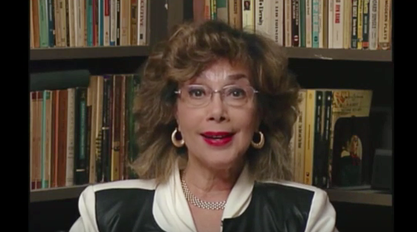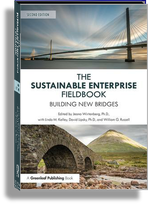CHAPTER 1 : LEADERSHIP FOR A SUSTAINABLE ENTERPRISE
|
ACTIVITIES
|
|
TOOLS
|
Supplemental Resources

Recommended Articles
Additional Recommended Books
- World Economic Forum 2019 Global Risks Report : Is the world sleepwalking into a crisis? Global risks are intensifying but the collective will to tackle them appears to be lacking. Instead, divisions are hardening.The world’s move into a new phase of strongly state-centred politics, noted in last year’s Global Risks Report, continued throughout 2018. The idea of “taking back control”— whether domestically from political rivals or externally from multilateral or supranational organizations— resonates across many countries and many issues. The energy now expended on consolidating or recovering national control risks weakening collective responses to emerging global challenges. We are drifting deeper into global problems from which we will struggle to extricate ourselves.
- Dynamical organizational theory: This paper presents a new theory, the Dynamical Organizations Theory: Openness, Synthesis & Emergence for organizational change that is practical and proven in many organizations. It integrates the work of Ilia Prigogine on dissipative systems (open, free flow of information and energy into, out of and throughout the organization), and synthesizes Kevin J. Dooley’s discussion of complex adaptive systems, Jeffrey Goldstein’s discussions of dissipative structures and self-transcending constructs, Per Bak’s self-organizing criticality, John Bennett’s Systematics and uses Richard N. Knowles’ Process Enneagram, a disciplined, focused dialogue tool which leads to the emergence of new information and releases the creative energy of the people..
- Achieving Sustainable Business Excellence, A Proven, Complex Adaptive Systems Leadership Approach -Best Practice: The leadership team needs to engage in focused, purposeful, and intense discussions together to become aligned and clear on its desired outcomes and goals. A great tool to do this is the Process Enneagram™, which enables everyone to see the whole, the parts, the interactions of the parts, and the processes of how things actually work. Then they need to have the courage, care, concern, and commitment to go into their organizations sharing and upgrading their thinking, getting to know the people, listening, talking, and learning together, teaching each other, providing clear, consistent messages, and building coherence across the organization. As they do this, the container to hold the organization together is co-created, providing order and focus as well as the freedom and space for the people to self-organize, create new ideas and possibilities and become more accountable and responsible, growing themselves and the business.
- Designing a New Landscape for OD: Jeana Wirtenberg proposes using the metaphor of a tree for re-thinking organizations...."We started out by deciding to look at our living organization holistically and organically. We wanted to veer away from looking at organizations through the typical lens of the organization chart with boxes and individual departments, sections, functions, and the inevitable silos that are so pervasive in organizations today. We thought about different representations that could inspire a new, more sustainable vision and possibility. This was a challenge, because it forced us to think outside the box―literally. No more rectangles of rigid hierarchy, confined to paper and the past. Instead, we wanted to invite the wisdom of nature into the process of envisioning a new, living system. After considering various options, we came up with the tree as a symbol of this living collection of human beings working together to realize a shared visionfor the future....."
- Baker Leader to Leader: Organization Use of Self (OUS—pronounced “us”), ..., is becoming a new symbol of leadership. It is an expansion of the foundational use of self and is being used to support leadership that is reciprocal, relational, and collective. OUS focuses on the management of tension that occurs and the balance needed between core organization leadership factors— resilience—the tension and balance needed between adaptation risk and mitigation risk and ego strength— the tension and balance needed between confidence (the belief that you can rely on your sense of self-worth and abilities) and humility (the view you hold of your own importance and worth).
- Leadership development pushes past comfort: A company’s business may not be in a danger zone, but leadership development efforts can’t wait until it is. Even though business is good and the organization is humming along, challenging leaders to break out of their comfort zones and develop the skills needed to sustain and grow the business can provide for a stronger future.
Additional Recommended Books
- Holman, Peggy (2010). Engaging Emergence: Turning Upheaval into Opportunity, San Francisco: Berrett-Koehler Publishers, Inc.
- Laloux, Frederick (2014). Reinventing Organizations: A Guide to Creating Organizations Inspired by the Next Stage of Human Consciousness, Nelson Parker: Brussels, Belgium.
- Marion, Russ (1999). The Edge of Organization, Thousand Oaks, CA.: Sage Publications.
- McCarter, Beverly G. and White, Brian E. (2013). Leadership in Chaordic Organizations, Boca Raton, FL.: CRC Press.
- Capra, Fritjof (1996). The Web of Life, New York: Anchor Books Shaw, Patrica (2002). Changing Conversations in Organizations, A Complexity Approach to Change, London: Routledge
- Wheatley, Margaret (1999). Leadership and the New Science, Discovering Order in a Chaotic World, San Francisco: Berrett-Koehler Publishers, Inc.
- Engaging Emergence (2010). Turning Upheaval into Opportunity by Peggy Holman. San Francisco: Berrett-Koehler.
- Reinventing Organizations (2014). A Guide to Creating Organizations Inspired by the Next Stage of Human Consciousness by Frederic Laloux. Brussels, Belgium: Nelson Parker.
Audio Content
- Dick Knowles (author of “The Leadership Dance” and creator of the Process Enneagram) is a long term Plexus Institute member. His paper published at Plexus Institute, Engaging the Natural Tendency of Self-Organization is am important early work on the influences of complexity and human nature. DicK Knowles's conversation with host Bruce Waltuck on The Plexus Institute's ComPlexus Podcast Series
|
Video Content
|

